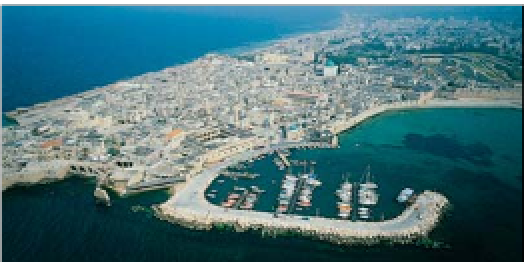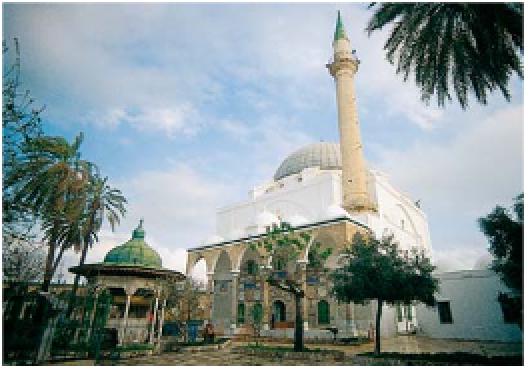Travel Reference
In-Depth Information
Akko
Outside of Jerusalem Akko (the historic Acre)
has the most complete and charming old town
in all of the Holy Land. Its origins date back
to Canaanite times, but the form in which it
survives today was set by the Arabs and their
Crusader foes. After the Crusaders took
Jerusalem in 1099, they seized Akko as their
main port and lifeline back to Europe. Lost
at one point to the Muslim armies under
Saladin, it was regained by Richard I “the
Lionheart”. For most of the 13th century,
with Jerusalem in the hands of the
Muslims, Akko was the Crusaders' principal stronghold.
As the Christian armies steadily lost ground, it was the
last bastion to fall. Akko's fortunes were revived under
a series of Ottoman governors, one of whom, Ahmed
Pasha el-Jazzar, successfully defended the city against
an invasion by Napoleon in 1799.
U
Mosque of El-Jazzar
El-Jazzar St.
Tel
(04) 991 3039
l
#
daily.
¢
during prayers.
&
Akko lay semi-derelict for
more than 400 years after its
destruction in 1291. Its rebirth
came with the rule of the
emir Dahr el-Amr and his
successor, Ahmed Pasha el-
Jazzar (“the Butcher”), both of
whom governed the city for
the Ottomans in the second
half of the 18th century. El-
Jazzar, in particular, was a
prolific builder. Among his
legacy is the attractive
Turkish-style mosque (built
1781) that bears his name and
continues to dominate the old
town skyline. Its courtyard
contains recycled columns
from the Roman ruins of
Caesarea and, at the centre, a
small, elegant fountain used
for ritual ablutions. Inside the
mosque are the sarcophagi of
El-Jazzar and his son, while
underneath (and accessed
from the courtyard cloisters)
are the remains of a Crusader
church that El-Jazzar had
transformed into a cistern
to collect rainwater.
Khan el-Umdan
clocktower
T
Crusader City
El-Jazzar St.
Tel
(04) 995 6706.
l
#
8:30am-4pm Sun-Thu, 8:30am-
2pm Fri.
&
When the Ottoman governors
rebuilt Akko they did so on
top of the ruins of the
Crusader city. The Crusader-
era street level lies some 8 m
(25 ft) below that of today.
Part of it has been excavated
revealing a subterranean
wealth of well-preserved
examples of 12th- and 13th-
century streets and buildings.
The harbour at Akko, in continuous use since Canaanite times
Exploring Akko
Crusader Akko was destroyed
by the victorious Arab armies
in 1291 and what can be seen
today is largely an 18th-
century Turkish town built on
the site of the old. The heavy
defensive
walls
are rebuildings
of the original Crusader walls,
fragments of which are still
discernible. The tight, warren-
like street pattern within the
walls is interrupted by three
great khans, or merchants'
inns: the
Khan el-Umdan
(Khan of the Columns) with
its distinctive clocktower; the
Khan el-Faranj
(Khan of the
Franks or Foreigners); and
the
Khan el-Shohada
(Khan
of the Martyrs). While the
khans date from the Ottoman
era they echo the fact that
in Crusader times Akko had
autonomous quarters given
over to the merchants of Italy
and Provence. Such was the
rivalry between these colonies
that at one point open war-
fare erupted between the
Venetians and Genoese, who
fought a sea battle off Akko
in 1256. The khans are no
longer in commercial use but
Akko does have a lively
souk
,
selling fruit and vegetables
and household items - no
tourist knick-knacks here.
You'll also find plenty of
fresh fish, which you can see
being brought ashore at the
town's picturesque harbour
early each morning.
Akko's dominant landmark, the Turkish-style Mosque of el-Jazzar
For hotels and restaurants in this region see pp258-9 and pp275-8












